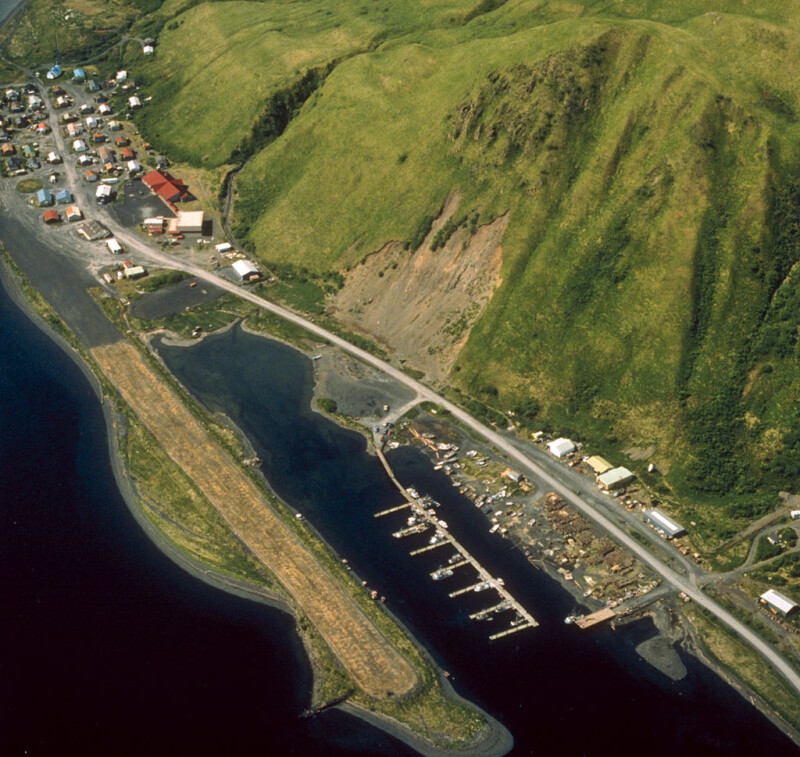In 1973, Alaska passed one of the most consequential laws for its coastal economy, the Limited Entry Act. It was born in a time of overcapacity and industry collapse. The law was designed to safeguard the long-term health of Alaska’s fisheries while ensuring that Alaskans had a fair shot at staying in the game. But fifty years later, the ripple effects of limited entry are still being felt, especially in the rural communities that depend on commercial fishing for cultural and economic survival.
“Most people didn’t want limited entry,” shared Freddie Christiansen, a third-generation fisherman from Old Harbor on Kodiak Island. “They were scared of it. They didn’t want to be told that you’re going to be told whether or not you could go fishing.” Christiansen joined the most recent episode of Talk of Alaska presented by Alaska Public Media and hosted by Lori Townsend to reflect on how the law has changed life on the water and on the docks.
The Limited Entry Act was created to manage open-access chaos. When Alaska gained statehood in 1959, there were no limits to who could fish. This led to ballooning participation, and by the early 1970s, there were too many boats chasing too few fish. The results were low dock prices, unsafe working conditions, and a fishery teetering on collapse.
“The original goal of the act was to try and reduce the number of people fishing because the value of the fish was not able to support the number of people who were fishing at the time,” Glenn Haight, director of the state’s Commercial Fisheries Entry Commission, said on the podcast.
Haight said the system succeeded in stabilizing the fishery, but it came at a cost. “We now have a much smaller number of people earning a much higher share of the value,” he said.
For places like Old Harbor, that shift hit hard. In the 1970s and 80s, Christiansen said the community had over 30 boats in its harbor, supporting a bustling local economy. But after the permit system came into play, access dried up. “Now we have one or two people that have a permit,” he said. “You could tell right away, things changed.”
With limited entry, permits are issued to individuals and can be sold or transferred but not leased or jointly owned. This has led to a steady outflow of permits from rural communities to urban hubs as younger fishermen struggle to buy in.
“You have to have a permit to fish, and you’ve got to have a boat to fish. So you’re kind of stuck. How do you get there?” Christiansen asked.
The cost of entry today can run in the hundreds of thousands, putting ownership out of reach for many young people in villages where cash jobs are scarce. Christiansen pointed to missed opportunities in state policy. “We have all these native corporations and tribal entities.. Why can’t we do it through our own people and own programs and help ourselves?”
Current law doesn’t allow for community or tribal ownership of permits. While the state allows liens for certain institutions like the Commercial Fishing and Agriculture Bank (CFAB), it doesn’t extend that same authority to Native organizations. That legal wall, Haight said, was built to keep permits in the hands of fishermen and out of the hands of corporations.
However, that goal of protecting the fleet has somehow worked against the rural communities. “I find it alarming, especially being part of the state of Alaska as Indigenous people and Native people in rural Alaska, that you have not been able to come up with a way to allow ourselves to help ourselves,” Christiansen said.
Looking ahead, Haight said any changes to the act would require careful legal navigation. “If you made some tweaks to the act, you really could upset the apple cart,” he said. “Litigation has loomed large throughout the history of this act.” Still, the issue may get fresh attention from an interim legislative workgroup this summer.
Among potential reforms are regional permit banks or limited regional permits, both of which would help keep access local. Another option is a buyback program for underutilized permits. “Most of the value in the fisheries is earned by a fewer number of people. Those are your highliners,” Haight said. “There’s probably a proportion that wouldn’t mind getting bought out.”
But those solutions also raise more questions: who would fund a buyback? Who gets the permits next? How do you avoid repeating history?
For Christiansen, the answers lie in empowering communities to chart their own path. “If there would have been something in place to allow protecting our rural residents.. we would still have our 30 or 40 boats in the harbor. We would still be a thriving village.”
Beyond economics, Christiansen sees the fishing industry as a lifeline for cultural identity. “It’s our way of life,” he said. “Without that ocean.. look and see what we’ve got in out villages.”
Shrinking permit access in Alaska has contributed to school closures, job loss, and growing social struggles. But Christiansen believes it’s not too late. “There’s definitely a fix, but it’s going to take a meeting of minds and everybody willing to give a little and try to make it work,” he said.
Listen to the full Talk of Alaska episode of The History of Limited Entry Fisheries here.







